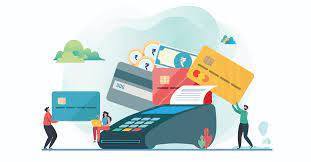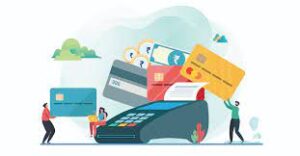Why Digital Payment is Better Than Cash
4 min read
Using digital payment methods is a great way to get around the high costs associated with traditional forms of payment. The main advantage of using digital payment methods is the convenience that they bring. In addition, they can save you money as well as time.
Increase access to formal financial services
Increasing access to formal financial services via digital payment is an important tool in poverty reduction in developing countries. However, it can have unintended consequences that can lead to outcomes opposite to what is intended. Creating an effective digital financial inclusion program should be delivered in a way that is responsible, efficient, and affordable for the providers and their customers.
For the excluded population to be able to take advantage of digital financial services, they must be educated about the benefits of digital finance. They also need to obtain digital access credentials such as online banking logins, mobile money accounts, or other digital access credentials. This may be difficult to do for poor individuals, as they may not have access to the internet or to digital finance platforms.
Digital payment is used to make payments in store, pay bills, and purchase things. This increases access to formal financial services, since these payments are directly transferred to a financial institution account.
Facilitate the success of female entrepreneurs
Increasing access to digital payment technologies can facilitate the success of female entrepreneurs. Digital payments make financial transactions cheaper and safer for both the entrepreneur and the financial institution. In addition, digital payments automatically create an electronic trail of financial transactions, reducing the risk of document-related fraud. Digital payments can also make it easier to manage finances, and help women keep track of their finances.
In addition, digital payment innovations enable women to expand their businesses and access new markets. In addition to improving financial inclusion, digital payments can reduce the risk of theft, and enable women to be more mobile. In addition, digital payments provide a secure and convenient way to pay for goods and services, thereby eliminating the need for women to travel to distant bank branches.
Digital technology also makes it easier for female entrepreneurs to run their businesses from home. In addition, digital financial payments can also reduce the need for a government-issued identity card.
Improve lives of people on low income
Using digital payments to distribute funds to vulnerable groups is a win-win for senders and receivers alike. Almost two-thirds of recipients will use their accounts for cash management. The use of digital payments can also reduce the need for physical cash. Using digital payments to manage remittances can help to improve financial inclusion in some of the most under served regions of the world.
For most low-income earners, remittances are the first financial product they are introduced to. For these individuals, receiving a remittance in an account can be a game changer, especially in a region like Latin America and the Caribbean where the average monthly salary is about the same as the average price of a can of beer. By making the transaction cheaper and quicker, recipients can use their money to further their own financial goals. A well-functioning remittance infrastructure can also help improve incomes in low-income regions by providing essential goods and services to the under served.
Advance the Sustainable Development Goals
Using digital payment products and other technologies can help advance the Sustainable Development Goals. For example, digital payment products allow people to get money from friends in crisis, while also respecting their privacy. They can also improve efficiency and transparency. In addition, they can help reduce the risks of falling into poverty.
The SDGs aim to end poverty, protect the environment, and ensure that all people enjoy peace and prosperity. The SDGs are the result of an inclusive process. They involve all sectors of society, from businesses to governments. These 17 goals are designed to be met by 2030.
The SDGs are a call to action for all nations to work together to end poverty and inequality. Countries have the responsibility to mobilize efforts to eradicate poverty and inequality, to combat climate change, and to work towards a sustainable future. This includes addressing the need for sustainable infrastructure and innovation.
According to the UN, digital payments are a key driver in advancing several SDGs. For example, the Better Than Cash Alliance case study details how increased transparency, efficiency, and waste prevention have contributed to increased economic opportunity for thousands of smallholder farmers in Kenya.
WebStoryHunt is an online Story portal focused on delivering Stories on the latest technology, apps and software, science, lifestyle, and health. We bring you the latest facts and information that is mostly hidden from the eyes of the common man.






